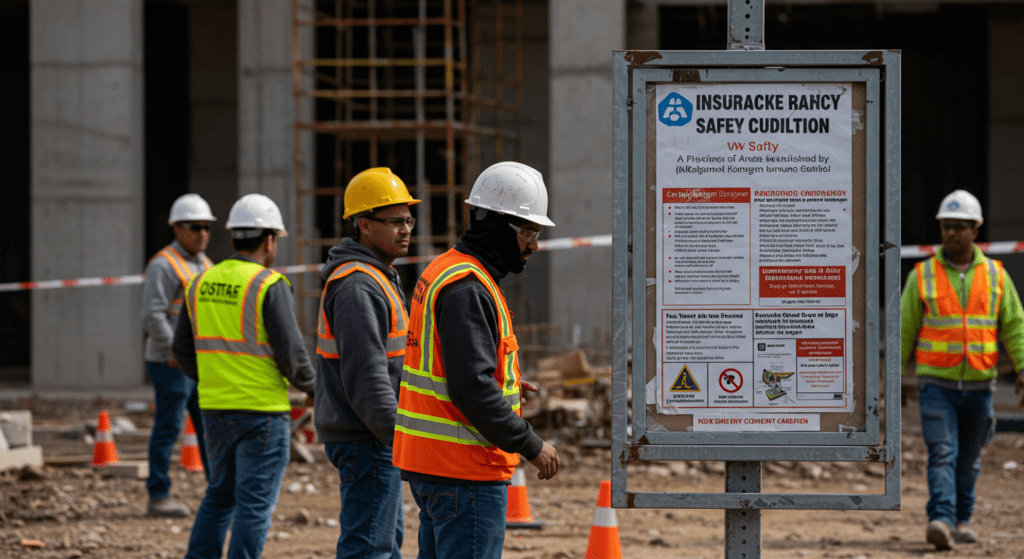- Understanding the Basics of Construction Insurance
- Key Legal Definitions and Terminology
- Statutory Regulations Impacting Construction Insurance
- Policyholder Rights and Obligations Under the Law
- Contractual Clauses and Their Legal Implications
- Risk Management from a Legal Perspective
- Handling Disputes and Claims Legally
- Case Studies: Legal Precedents in Construction Insurance
- Future Trends and Regulatory Changes in Construction Insurance
Construction insurance policies are essential risk management tools within the construction industry. They protect contractors, developers, and property owners from financial losses arising from accidents, property damage, or unforeseen events. A solid understanding of the legal framework that governs these policies is fundamental for both policyholders and insurers. This article examines key legal considerations, outlines common terminology, highlights statutory regulations, and reviews legal strategies for dispute resolution, ensuring that stakeholders navigate the complexities of construction insurance effectively.

1. Understanding the Basics of Construction Insurance
Construction insurance is designed to cover risks associated with construction sites, assets, and projects. Common policies include contractors’ all-risk insurance, liability policies, and combined insurance policies tailored for construction-specific challenges. These policies provide financial protection against events such as property damage, equipment breakdowns, bodily injury claims, and sometimes, weather-related disasters. The coverage extends to various phases of project development—from initial ground breaking to completion—and also factors in the unique risks associated with renovation or demolition activities.
2. Key Legal Definitions and Terminology
A firm grasp on key legal terms provides clarity in the interpretation and enforcement of construction insurance policies. Terms like “insured”, “policyholder”, “claim”, and “exclusions” are fundamental. The “insured” is the party seeking protection under the policy, while the “policyholder” is typically defined as the entity responsible for paying premiums. A “claim” refers to the formal request for financial compensation due to a covered loss, and “exclusions” delineate the specific risks or perils not covered by the policy. Other important legal definitions include “indemnity”, meaning compensation for loss or damage, and “subrogation”, which pertains to the insurer’s right to pursue recovery from third parties once a claim is settled. Understanding these terms enables stakeholders to clearly comprehend their rights and legal obligations under the contract.

3. Statutory Regulations Impacting Construction Insurance
Construction insurance does not operate in a legal vacuum. A multitude of federal, state, and local regulations influence its framework and enforcement. Statutory regulations ensure policies adhere to minimum standards, protect consumer rights, and maintain systemic financial stability. For instance, some regions mandate that contractors secure specific types of insurance before commencing a project. Regulations concerning licensing, financial solvency, and claims handling practices further shape the operational landscape. Additionally, compliance with occupational health and safety laws indirectly impacts construction insurance exposures and claims. These statutory measures promote accountability and protect both policyholders and third parties affected by construction-related incidents.
4. Policyholder Rights and Obligations Under the Law
Policyholders in the construction industry have specific rights and obligations enshrined in law. One fundamental right is the assurance of transparent policy terms and explicit coverage explanations. Insurers are legally obligated to provide clear documentation that details the extent of coverage, policy exclusions, deductibles, and processes for filing claims. Equally important are the policyholder’s responsibilities, which include the prompt payment of premiums and full disclosure of material information when applying for coverage. Failure to adhere to these obligations can lead to the denial of claims or even policy cancellation. Moreover, policyholders are expected to maintain reasonable safety standards on construction sites. Non-compliance can result in increased premiums, coverage limitations, or legal liability for injuries or property damage.
5. Contractual Clauses and Their Legal Implications
The construction insurance contract is a legally binding document that details the rights, responsibilities, and liabilities of the insured and insurer. Contractual clauses are instrumental in defining the limits of coverage and the conditions under which claims may or may not be payable. One common clause is the “force majeure” clause, which exempts insurers from liability when certain unforeseen events—such as natural disasters or acts of terrorism—affect the insured project. Another key clause involves “retroactive dates” that determine the beginning of the coverage period for pre-existing conditions. Clauses related to “waivers of subrogation” prevent insurers from seeking recovery against third parties once a claim has been paid. Thorough review and negotiation of these clauses can help avert legal disputes, ensuring that both parties have a mutual understanding of the policy’s scope and limitations.

6. Risk Management from a Legal Perspective
Risk management in construction is not solely a matter of safety protocols; it also requires thorough legal foresight. A proactive approach involves conducting legal audits, reviewing historical claims data, and ensuring compliance with all relevant laws and regulations before project commencement. Legal risk management addresses potential liabilities before they become claims, incorporating contractual indemnification clauses and ensuring that all subcontractors and supply chain partners have appropriate levels of coverage. This not only mitigates financial loss but also reinforces the legal integrity of the overall project. Integrating risk management within the legal framework includes regular training for staff on legal responsibilities, as well as updating contracts to reflect evolving statutes and case law precedents.
7. Handling Disputes and Claims Legally
Despite preventive measures, disputes over claims and coverage decisions can arise. When conflicts occur, legal strategies must be employed to resolve these issues efficiently. The claims process under construction insurance is typically governed by the policy’s arbitration or mediation clauses, designed to facilitate a swift, alternative dispute resolution outside the court system. However, when disputes escalate, litigation may be unavoidable. Staying abreast of procedural rules, meeting filing deadlines, and ensuring all communications are properly documented are crucial aspects of handling such legal challenges. Legal counsel experienced in construction insurance law can assist in navigating these disputes, advising on settlement negotiations, and representing stakeholders in court if necessary.

8. Case Studies: Legal Precedents in Construction Insurance
Historical case studies have established several legal precedents in the field of construction insurance. For example, disputes over coverage due to ambiguous contractual language have repeatedly emphasized the necessity for precise policy drafting. Courts have ruled in favor of policyholders where insurers failed to clearly communicate exclusions or where ambiguity in contractual terms left room for misinterpretation. Another precedent involves cases where insurers attempted to disclaim liability through broadly interpreted retroactive clauses; in these instances, the courts have often upheld a more balanced and fair interpretation, favoring a thorough, factual analysis of risk exposures and insured obligations. These legal precedents underscore the importance of clear language in insurance contracts and offer guidance for drafting and negotiating future policies.
9. Future Trends and Regulatory Changes in Construction Insurance
Legal and regulatory developments are continuously shaping the landscape of construction insurance. With rapid advancements in construction technologies and materials, regulators are updating statutory requirements to ensure that insurance policies remain robust and comprehensive. Future trends include increased scrutiny on environmental risks, cybersecurity threats associated with smart construction equipment, and the integration of data analytics in underwriting practices. Regulators are also likely to enhance consumer protection measures, ensuring that policyholders are better informed of their rights and the corresponding legal liabilities. Additionally, the globalization of construction projects is prompting a synchronization of policies across borders, requiring insurers and policyholders to navigate an increasingly complex legal framework that balances local requirements with international standards.
The evolution of legal standards within the construction insurance sector highlights the necessity for continuous legal education among stakeholders. Legislative bodies, industry associations, and legal professionals continue to debate best practices in policy drafting, coverage interpretation, and dispute resolution. This evolving legal landscape demands that insurers update their contracts to reflect new risk exposures and that policyholders remain vigilant regarding ongoing regulatory changes. As these trends unfold, the interplay between technology, risk management, and legal obligations will further influence contractual relationships and dispute mechanisms in the construction industry.

Conclusion
Navigating the legal considerations in construction insurance policies requires a solid understanding of the basics of coverage, mastery of key legal terminology, and a commitment to adhering to statutory regulations. The legal rights and obligations of policyholders, the implications of contractual clauses, and the integration of risk management all play significant roles in shaping a robust construction insurance strategy. With the added complexity of dispute resolution and ever-evolving regulatory trends, stakeholders in the construction industry must be proactive in their legal planning and enforcement. By consistently reviewing legal precedents and adapting to future changes, both insurers and policyholders can work together to create a fair, effective, and resilient approach to managing construction risks.
In an industry fraught with unique challenges and potential liabilities, keeping pace with legal standards and integrating them into every aspect of insurance coverage is vital. The approach informed by clear legal principles not only secures financial stability but also fosters confidence among partners, contractors, and investors, ensuring that construction projects succeed with minimized legal complications and financial setbacks.
